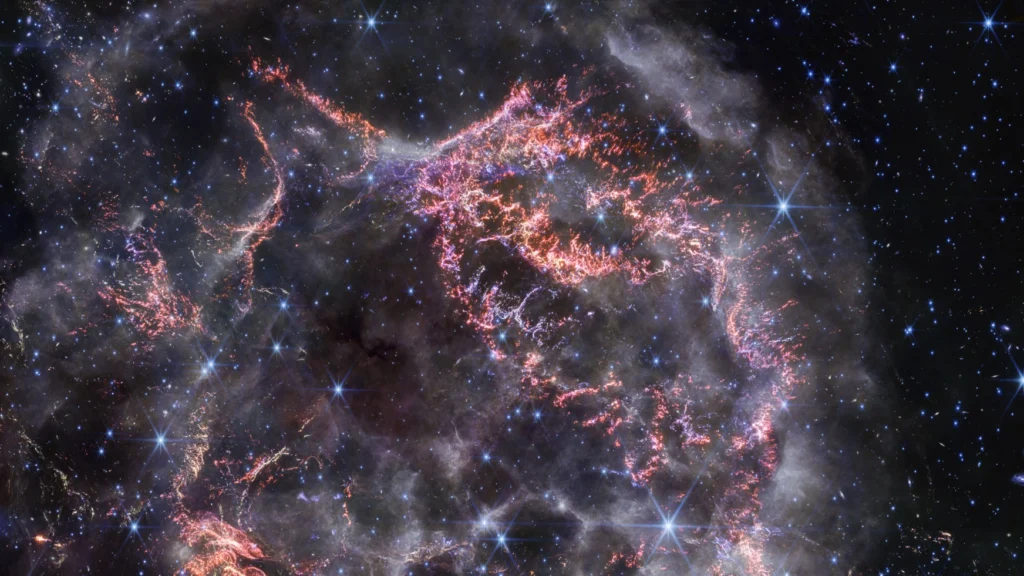Webb Space Telescope
The Webb Telescope, NASA’s highly anticipated successor to the Hubble Space Telescope, has recently captured a breathtaking image of a star explosion in the depths of space. This extraordinary event, known as a supernova, provides valuable insights into the life cycle of stars and the vastness of our universe.

The Webb Space Telescope, scheduled for launch in 2021, is poised to revolutionize our understanding of the cosmos. With its advanced technology and unprecedented capabilities, it will allow scientists to observe distant celestial objects with unparalleled clarity and precision.
Supernovae are some of the most energetic and catastrophic events in the universe. They occur when massive stars reach the end of their lives and explode in a brilliant display of light and energy. These explosions release an enormous amount of energy, briefly outshining entire galaxies and dispersing heavy elements into space.
The recent image captured by the Webb Space Telescope showcases the aftermath of a supernova explosion. The remnants of the star, known as a supernova remnant, are seen expanding outward in a mesmerizing display of colors and patterns. This image provides astronomers with valuable data about the explosion’s dynamics and the elements it has dispersed into the surrounding space.
By studying supernova remnants, scientists can gain insights into the processes that drive stellar evolution and the creation of elements essential for life. These explosions are responsible for the formation of heavy elements such as iron and gold, which are crucial building blocks for planets, moons, and even life itself.
The Webb Space Telescope’s powerful instruments, including its Near Infrared Camera (NIRCam) and Mid-Infrared Instrument (MIRI), enable it to capture images and spectra of celestial objects with unprecedented detail. This allows scientists to analyze the composition and temperature of the supernova remnant, as well as the distribution of elements within it.
Furthermore, the Webb Space Telescope’s ability to observe in the infrared range of the electromagnetic spectrum provides a unique advantage. Infrared light can penetrate dust clouds that often obscure visible light, allowing astronomers to peer into regions of space that were previously hidden from view.
With its advanced capabilities, the Webb Space Telescope will not only deepen our understanding of supernovae but also contribute to a wide range of astronomical research. It will study the formation of galaxies, the evolution of planetary systems, and the presence of water and organic molecules in distant exoplanets, among other fascinating topics.
As the launch of the Webb Space Telescope approaches, anticipation is building among scientists and space enthusiasts alike. This groundbreaking observatory promises to unveil the mysteries of the universe and inspire future generations to explore the wonders of space.
In conclusion, the recent image captured by the Webb Space Telescope of a star explosion, or supernova, provides a stunning glimpse into the awe-inspiring events that shape our universe. With its advanced technology and revolutionary capabilities, the Webb Space Telescope is poised to revolutionize our understanding of the cosmos and reveal the secrets hidden in the depths of space.